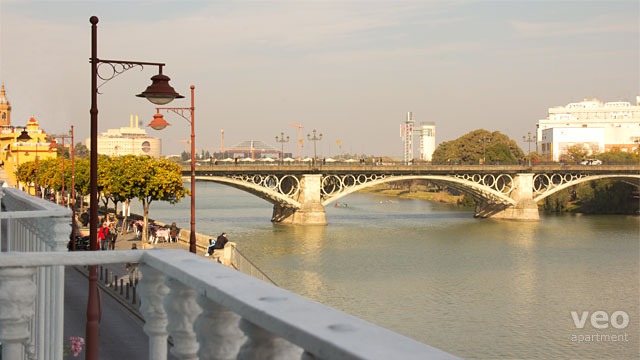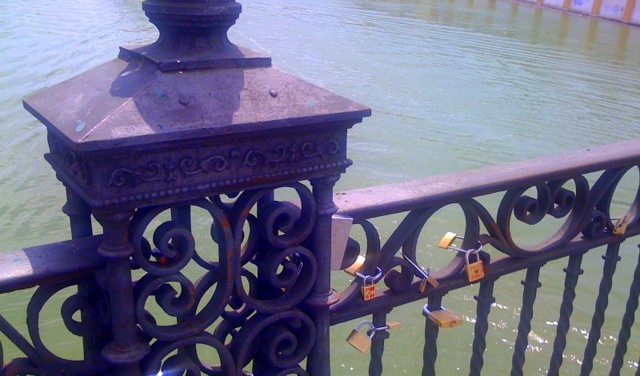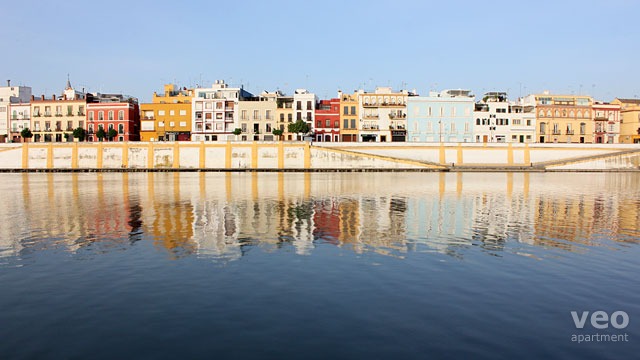Every city has its impressive and/or beautiful monuments, the things that residents boast about, and visitors come to see, but often it’s the less spectacular sights and sounds that capture the heart and make a place feel like home.
 view from our Betis Blue apartment
view from our Betis Blue apartment
The Isabella II (Triana) Bridge in Seville is definitely one of those places. It connects the old city of Seville proper with the neighbourhood of Triana on the other side of the River Guadalquivir. Triana, whose origins go back to Roman times (it is thought to be named for the Roman Emperor Trajan, who was born nearby), has always been a neighbourhood outside the city walls (an arrabal in Spanish), a marginal community that was something of a refuge for “outsiders” such as the gypsies. It also sat astride the main road westward to the Aljarafe and the coast, which is why the Muslims built a castle on the site of what is now the Triana market, followed in 1171 by the famous “bridge of boats” that was the only crossing of the river until it was finally superseded by the Isabella II bridge in the mid 19th century. The castle, meanwhile, became first the headquarters of the Order of St George, giving it its modern name of Castillo de San Jorge, and then from 1481 to 1785 of the Spanish Inquisition. By about 1800 the castle was demolished, and became the site of the Triana market.
 lover’s locks on the Isabel bridge
lover’s locks on the Isabel bridge
With their working class and immigrant roots Trianeros have always regarded themselves a breed apart. Many of those who sailed on the voyages of discovery and trade to the New World came from there, as did many famous flamenco artistes and bullfighters, for whom this was the way out of the ghetto. During Semana Santa (Holy Week) the processions of El Cachorro, La O, La Esperenza, and La Estrella are among the most fervently followed in all Seville, and the annual July fair of Santa Ana, Seville’s second largest, has been held since the 13th century.
 view of Triana from the Seville side of the river
view of Triana from the Seville side of the river
The bridge itself, with its arches and iron rings, is highly distinctive, and if you’re walking across it you may notice that the railings are often festooned with padlocks, sometimes bearing the names of those who have chosen this way of “plighting their troth”. At the Triana end the Carmen chapel and the roof of the Triana market above Saint George’s castle are also instantly recognisable. It’s certainly worth taking the time to pause midway across the bridge and looking down the river at some of Seville’s other landmarks. On the left are the wharves of the old river port, once one of the busiest and most important in Europe, where the sailing ships moored to load and unload the riches of the Americas. Beyond are the Torre del Oro and the towers of the Plaza España, and on the right the unusual shape of the old Moorish dock.
Our Betis Blue apartments on the Triana river front are the perfect place to be a part of this special atmosphere.